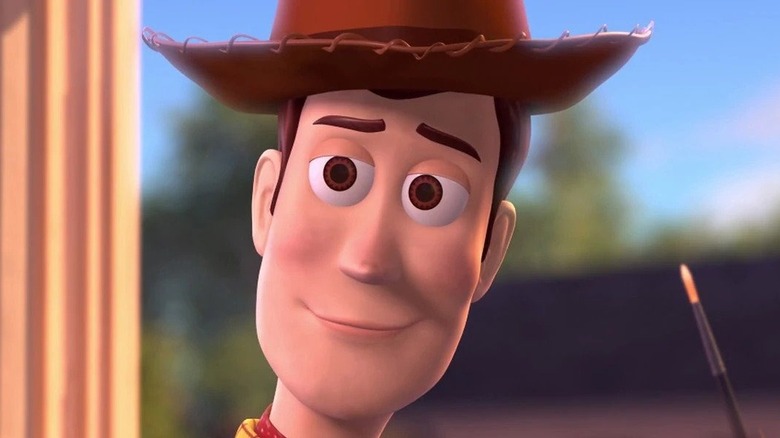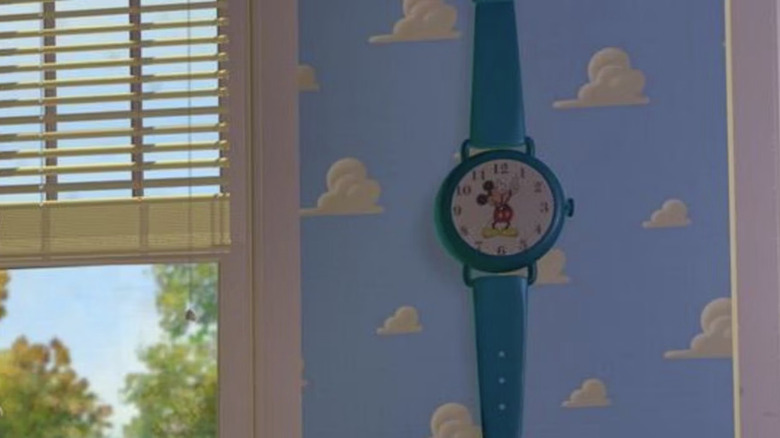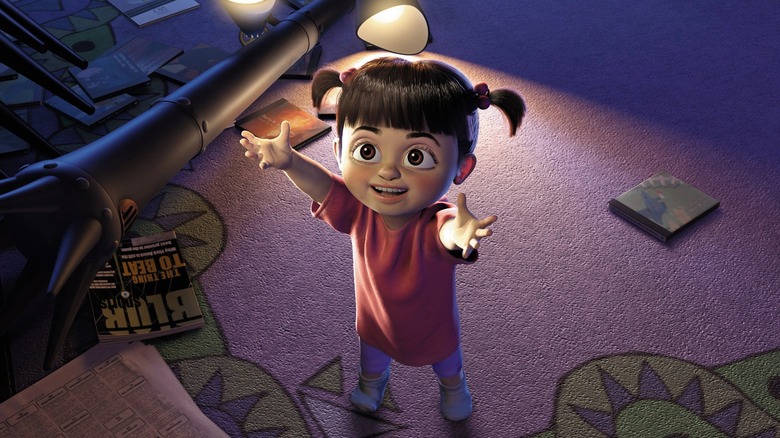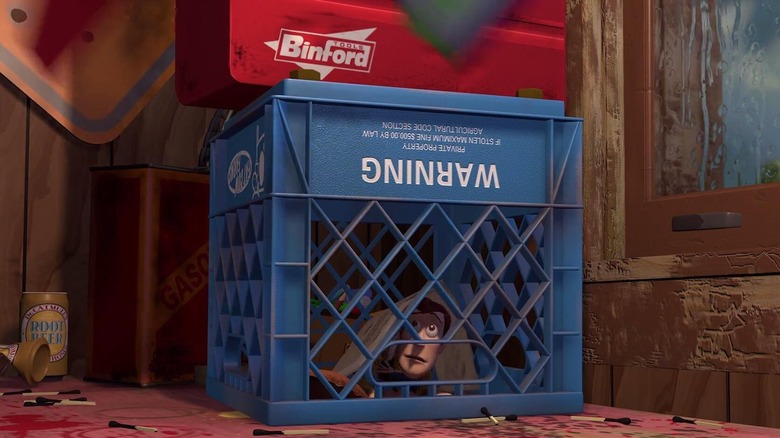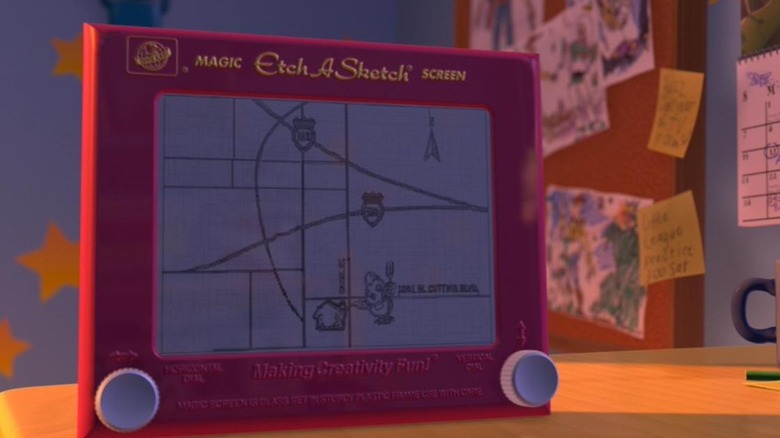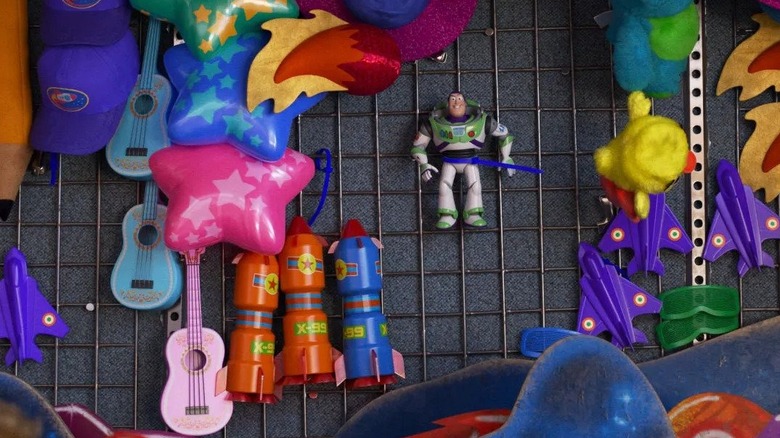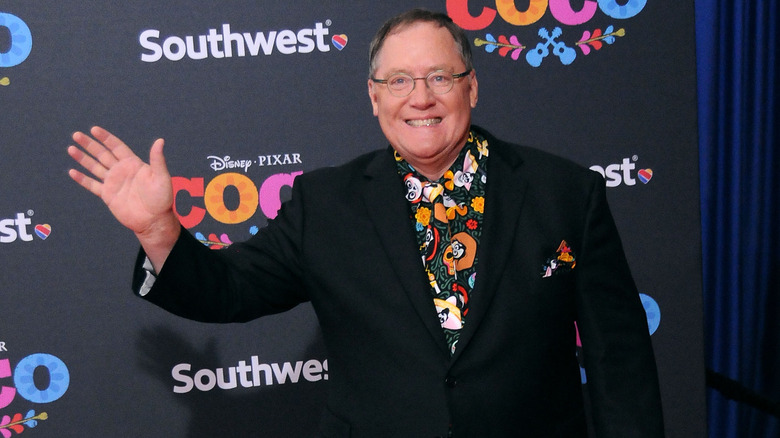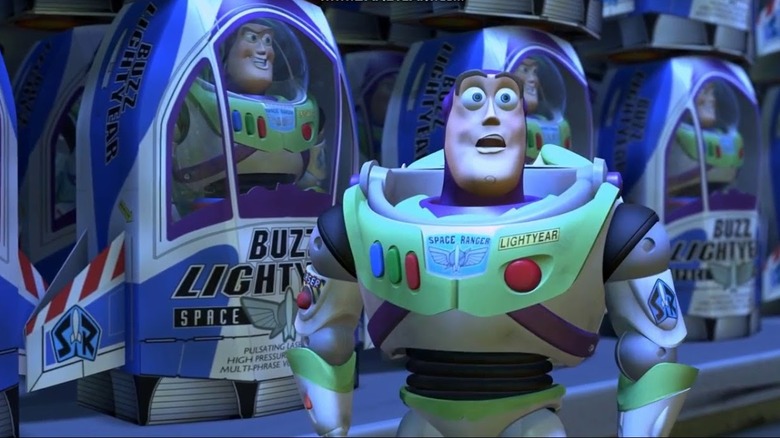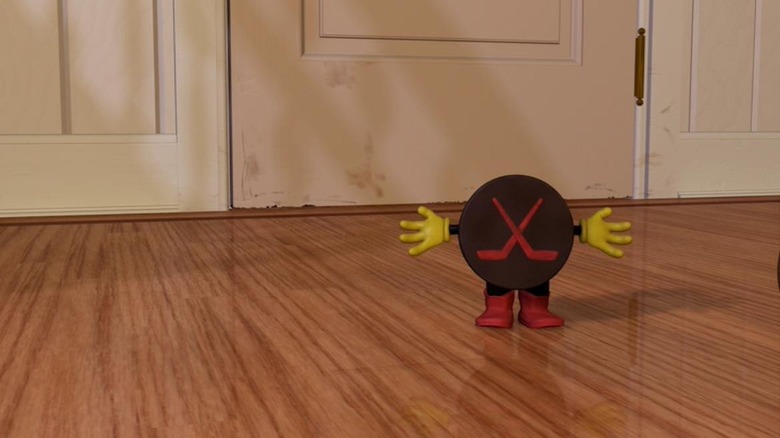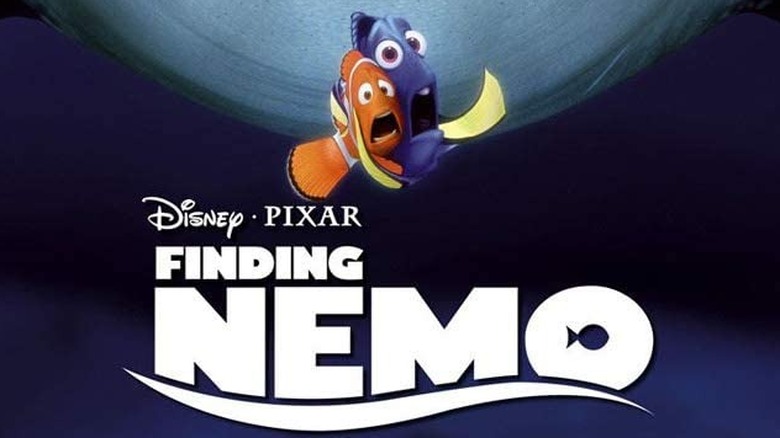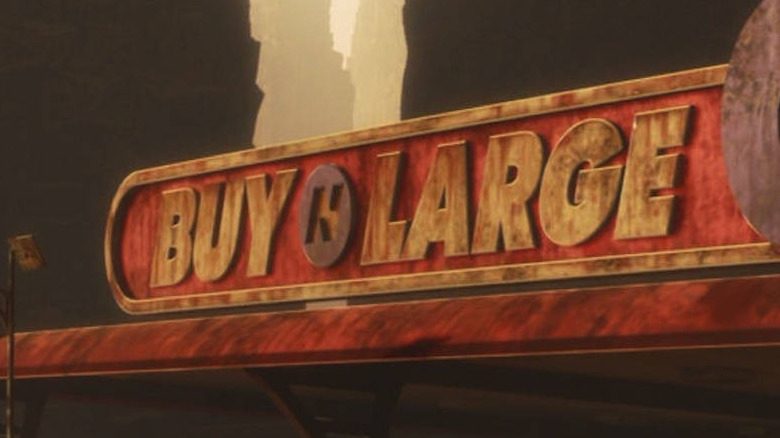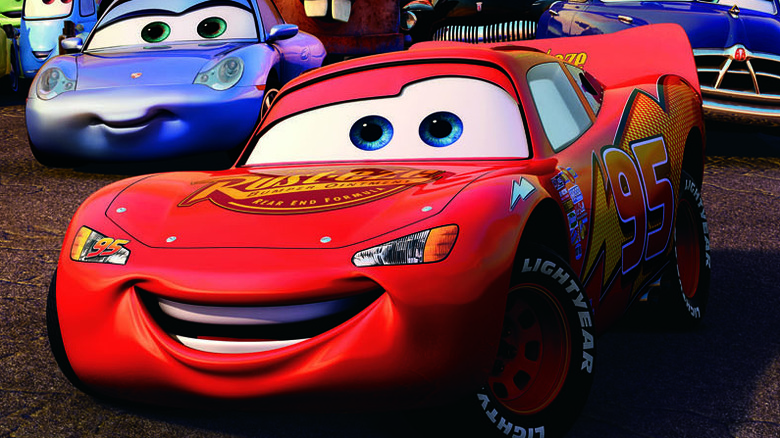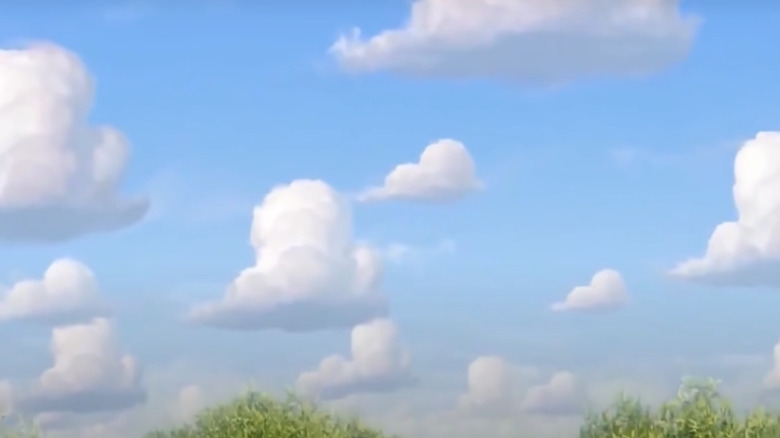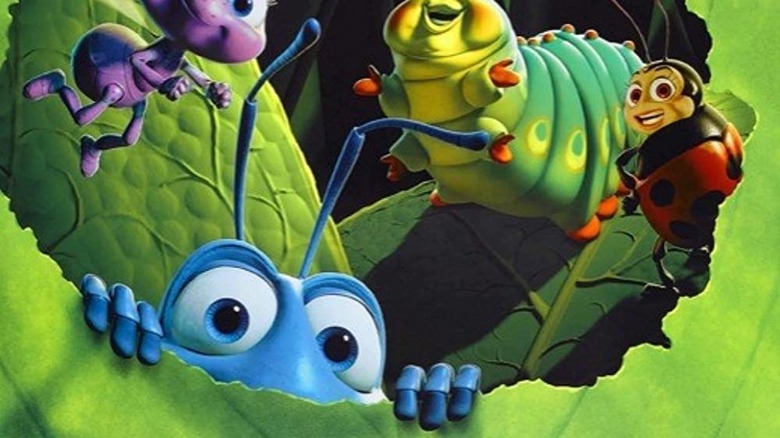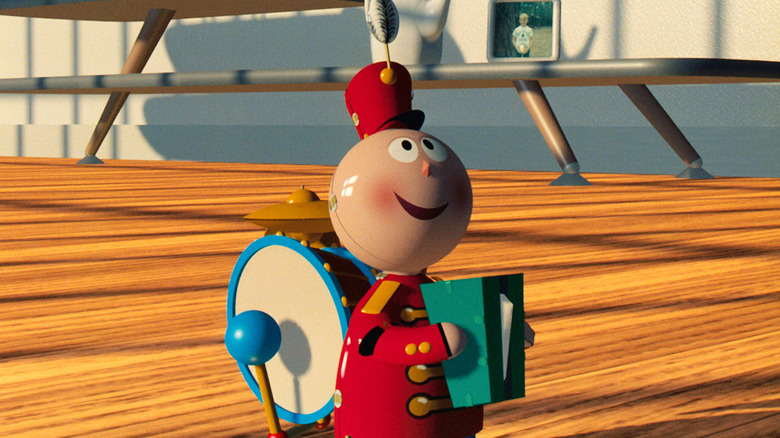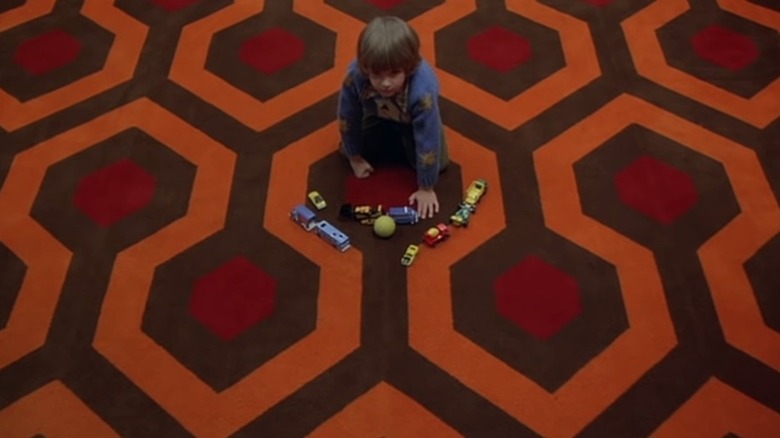The 15 Best Toy Story Easter Eggs, Ranked
Pixar may have started as a small computer graphics company (started by George Lucas and owned by Steve Jobs, no less) that made a few innovative short films in its early years, but it has since gone on to produce some of the most financially successful and critically acclaimed films of all time. The crown jewel of Pixar is undoubtedly its "Toy Story" series, which consists of four films. Not only does each film tell a hilarious yet heartfelt story about toys that come to life and go on adventures of their own, but it was the very first "Toy Story," released in 1995, that turned Pixar into a household name.
Clever writing and inside jokes abound in Pixar's films, and the "Toy Story" series is no exception. In every "Toy Story" movie, there are many Easter eggs that reference other Pixar movies and even nods to the lives of cast and crew members. While we could easily dedicate multiple articles to each film in the series and the hidden secrets they contain, we're just going to look at the 15 best "Toy Story" Easter Eggs from the quartet of films.
15. There's a Mickey Mouse clock in Andy's room in Toy Story
Look closely in the background of Andy's room and you'll spot a Mickey Mouse clock hanging on the wall, which is a fun little reference to the House that Mouse built. With that tip of the hat, "Toy Story" joins a growing list of Disney movies that feature hidden Mickeys, a cadre that includes such beloved films as "The Little Mermaid," "Frozen," "Sleeping Beauty," and "The Lion King."
While it may seem obvious for a Pixar movie to include a reference to Disney, considering the latter owns the former, the history between the two studios is a little more complicated. Disney didn't officially purchase Pixar until 2006, around 11 years after the first "Toy Story" was released. However, there was some relationship between them before Pixar started working on "Toy Story." In their early days, Pixar developed an innovative digital painting program called CAPS (Computer Animation Production System) that was used by Disney for their 1990 film, "Rescuers Down Under." Disney was impressed with what Pixar was doing and set up a deal to release thier feature films, and the rest is history.
14. Is that Boo from Monsters Inc?
"Toy Story 4" is so packed with Easter eggs that we did a whole article on it, and it still doesn't even cover them all. One of those Easter eggs is the brief appearance of Boo from "Monsters, Inc.," the two-year-old who accidentally ends up in the dimension inhabited by monsters and develops an attachment to Sullivan and Mike. She has two blink-and-you'll-miss-it appearances in "Toy Story 4": a background cameo in Bonnie's class (you'll have to squint for this one, as she's out of focus) and in the carnival scene. She can be hard to spot in both instances, but those pigtails and purple shirt are dead giveaways.
Interestingly enough, there was some speculation that Boo had previously appeared in "Toy Story 3." It's easy to see why, as the scene in question features a young girl who somewhat resembles Boo, only slightly older, and playing with a bluish hirsute feline toy (Boo refers to Sully as "Kitty" in "Monsters Inc.") and is even heard saying "boo." However, "Toy Story 3" director Lee Unkrich shot this theory down on Twitter.
13. That toolbox looks familiar...
Sid is the anti-Andy. Andy loved his toys and took great care of them, even when he was a teenager and ready to go to college, whereas Sid mangled his toys, tortured them, and performed "surgeries" on them. To perform these grisly acts on his toys, Sid relied on a variety of tools. While these tools may look like the usual stuff you'd find in any garage, there's a toolbox with a familiar logo — that of Binford Tools.
That name should be recognizable to those of us who were around in the 1990s, as it's the fictional tool supply company from "Home Improvement." It's more than a nice little reference to a sitcom that was popular at the time, as Tim Allen, who voices Buzz Lightyear, played Tool Man Tim Taylor on "Home Improvement." I'm sure it wasn't hard for Pixar to get permission to use the logo from another studio, as Disney bought ABC in 1995, the year that "Toy Story" was released.
12. Shoutouts to Pixar's origins
"Toy Story 2" features a scene wherein Andy's toys concoct a plan to rescue Woody, who's trapped at Al's Toy Barn. In their scheming, they draw up a map of the neighborhood. It may look like a sketch of any map, but the address for Al's Toy Barn, 1001 West Cutting Boulevard in Richmond, California, to be exact, is the location of one of Pixar Studios' original home. Cutting Boulevard gets another nod in "Toy Story 3." Andy has a street sign with that fabled name on it hanging on his bedroom wall.
However, the most prevalent reference to Pixar's origins is "A113," the number of the character animation classroom at the California Institute of the Arts where many Pixar staff members learned their craft. The number has been used in nearly every Pixar film, but keep an out for it in the "Toy Story" series. It's seen on the license plate on Andy's mom's car in "Toy Story," mentioned as a plane flight number in "Toy Story 2," and on Bonnie's family truck in "Toy Story 4."
11. Coco gets a nod
In "Toy Story 4," the gang accompanies Bonnie and her family as they embark on a road trip. However, Forky, a toy that Bonnie made from a spork and other craft materials, believes that he was made to be disposable and doesn't belong with the other toys and jumps out of the moving car. Woody dives out after him, leaving the rest of the toys with Bonnie. Buzz Lightyear decides to find Woody himself but gets lost at a carnival and ends up on the prize wall for a game booth. It's here that Buzz meets the other "prize" toys, Bunny and Ducky, but take a look at some of the other toys on the wall. Recognize anything?
Eagle-eyed Pixar fans will notice that it's possible to win a toy guitar that has the same design as the one Miguel teaches himself how to play in "Coco." The guitars featured in "Toy Story 4" come in blue and pink, while the one that Miguel plays is white, but they all share the same elegant design. Maybe these prize guitars also have the power to reconnect kids with their ancestors?
10. A tribute to one of Pixar's founders
As one of the founding fathers of Pixar, John Lasseter has had a long and important tenure with the animation giant. His writing, directing, and producing credits include the "Toy Story" films, "A Bug's Life," "Finding Nemo," "The Incredibles," the "Cars" films, "Up," and many more. He's been breaking new ground in animation since Pixar's early days with his work on such computer-animated shorts as "Luxo Jr." (which features the origin of Pixar's iconic lamp) and "Tin Toy," for which he won an Oscar an Oscar for Best Short Film, and included elements that would later be developed in the "Toy Story" series.
Because of Lasseter's long history with Pixar, is it any wonder that he gets referenced throughout the "Toy Story" films? For example, during the scene in the first installment in which Woody is giving a speech to the other toys about moving buddies and Andy's approaching birthday party, there's a shelf of books (more on those later). One of those books is authored by someone named "Lasseter." "Toy Story 2" features a magazine with the date January 12, 1957. That is Lasseter's birthday. Also in "Toy Story 2," keep your ears open for an announcer mentioning the name LassetAir during the airport scene.
9. Art imitates life
In "Toy Story 2," Woody is stolen from a yard sale at Andy's house by the obsessive toy collector, Al, of Al's Toy Barn. This prompts Buzz Lightyear to rescue his buddy — with the help of Rex, Potato Head, Hamm, and Slinky Dog. When they get to Al's Toy Barn, Buzz splits from the group to look for Al. The others bump into Tour Guide Barbie, who offers to take them to Al but proceeds to give them an in-depth tour of the toy store. She takes them to the Buzz Lightyear aisle, which is packed with dolls of the eponymous spaceman, remarking that "back in 1995, short-sighted retailers did not order enough dolls to meet demand." This may seem like a throwaway line, but it's true!
As recounted in MarketingWeek, even though "Toy Story" had an A-list voice cast and was released by one of the biggest studios (which was experiencing a renaissance of sorts in the early 1990s), the notion that it was a completely digitally animated film made toy companies nervous. It brought to mind Disney's 1982 computer-enhanced flop, "Tron." Toy companies let their caution prevent them from manufacturing a larger order of Buzz Lightyear toys, which ended up blowing up in their faces as "Toy Story" went on to become a major hit with almost every kid demanding a Buzz Lightyear figure.
8. You hockey puck!
Near the beginning of "Toy Story," after Andy has left his room, we see all of his toys come to life for the first time in a charming sequence. Woody calls for a staff meeting to prepare for Andy's upcoming birthday party. As they convene for Woody's pep talk, Mr. Potato Head rearranges his facial features into an abstract expression to impress Hamm, calling himself "Picasso." Not catching the reference, Hamm walks away, prompting Mr. Potato Head to call him an uncultured swine. When Mr. Potato Head turns around, he yells "What are you looking at, you hockey puck?" and storms off, revealing that he was talking to an actual hockey puck.
This isn't just a physical gag. Don Rickles, who voiced Mr. Potato Head, used "hockey puck" as an insult for decades in his stand-up comedy career, going back to the 1950s. It even shows up in the title of his 1975 special, "Don Rickles: Buy This Tape You Hockey Puck." Rickles was known for pushing the envelope with his insults, so let's be thankful he kept it clean with a phrase that only sounds like an obscenity for this kids' movie.
7. Finding Finding Nemo references
Nemo may have been found, but have you found all of the references to his film in the "Toy Story" series? Let's start with some references in "Toy Story 3." Look closely at the wagon-style toy chest in Andy's room and you'll see a sticker of a certain clownfish that we're assuming is Nemo (it'd be odd for Andy to place a sticker of Nemo's dad, Marlin, on his toy chest). It seems that children that inhabit the "Toy Story"' universe are big Pixar fans, as a toy of Mr. Ray, Nemo's blue and white spotted eagle ray singing teacher, can be seen at Sunnyside Daycare.
"Toy Story 4" may go down as the Pixar movie with the most Easter eggs, and what better place to store all of these Easter eggs than the antique store seen in the film? There, you'll see not one but two "Finding Nemo" references (and possibly more). Look closely and you'll see the goggles that Marlin uses to look for his son Nemo, and if you scan the shelves, you'll spot the tiki heads that first appear in the fish tank in "Finding Nemo."
6. What's the deal with that BnL logo?
If anyone needs some corroboration of the Pixar Theory and how all Pixar movies exist in the same shared cinematic universe, here's some proof. In "Toy Story 3," Buzz Lightyear talks to Lotso about getting transferred to the Butterfly Room with the older children who are less likely to be so rough on them. Lotso offers Buzz a chance to be transferred but not the other toys, an offer that Buzz declines. This angers Lotso, who has his flunkies restrain Buzz, open up his battery compartment, and reset him to his factory settings, erasing his personality and memories. However, there's something important about the logo on the batteries.
If you're a true Pixar fan, you'll recognize it as the logo for the fictional company, Buy N Large, which plays a prominent part in "WALL-E." In the film, Buy N Large's products are scattered around the abandoned Earth, many of which WALL-E is tasked with compacting. With their logo appearing practically everywhere, Buy N Large even owns the luxury starliners that Earth's populace inhabits. Hopefully, Buzz Lightyear properly disposes of his batteries to lighten the load on WALL-E eight hundred years into the future.
5. Cars references
The "Cars" franchise may not have the same appeal as Pixar's other films, but that hasn't stopped the "Toy Story" series from giving its sibling some love. In "Toy Story 3," there's a child at Sunnyside Daycare that has a t-shirt with the number 95 and a lightning bolt on it. This is a reference to Lightning McQueen, the main protagonist of the "Cars" series. It's nice to know that there's at least one fan of the series, even if they're not old enough to drive yet.
In "Toy Story 3" is a reference to a "Cars" character that hadn't even officially appeared onscreen yet. Andy has a poster in his room of a pretty slick British spy-type of car, which ended up being Finn McMissile in "Cars 2," a film that didn't get released until a year after "Toy Story 2." As a bonus, the first "Toy Story" features a gas station called Dinoco, whose logo would eventually be reused as the name of a racing team in "Cars" years later. Technically, this is more of a "Toy Story" Easter Egg in "Cars," but it's still a fun little connection that's worth mentioning. Let's just call it a "preemptive Easter egg."
4. Those clouds look familiar...
The first shot in "Toy Story" is of a bright blue sky with big fluffy white clouds, which are soon revealed to be the wallpaper design of Andy's bedroom. This leads to a sequence of Andy playing with Woody and the rest of his beloved toys. Keep this scene in mind next time you watch "Toy Story 3." The film ends with an older Andy giving his toys to Bonnie in a bittersweet goodbye, with one last shot of the sky filled with big fluffy clouds — just like the wallpaper in the first film.
This Easter egg is a touching way to bookend a series, but it's a little dated since we now have four "Toy Story" movies. "Toy Story 3" was originally supposed to be the final installment of the series, at least according to its director Lee Unkrich, who told NOLA in 2010 that "I really always thought of this as the conclusion to one big story. I feel like we were trying to make one really great four-and-a-half-hour movie. And so as a result, I really worked hard to bring an end to the story of Andy and his toys."
3. A Bug's Life references
The "Toy Story" series is really generous about referencing other Pixar films, as "A Bug's Life" has gotten some little shout-outs throughout the series. Al's Toy Barn in "Toy Story 2" has plenty of Easter eggs. Among them are toy versions of Flik and Dim from "A Bug's Life," seen when Buzz Lightyear is running through the toy store by himself.
"Toy Story 3" has some sneaky references to "A Bug's Life" in the form of another toy version of Flik running away with the other toys just before the rush of children enter the classroom from recess, and the letters "A T T A" (a reference to the character Atta), which can be seen on the wall in the classroom. And of course, there's the antique store in "Toy Story 4," which unsurprisingly features another "A Bug's Life" Easter egg — the Casey Jr. Cookies box that was used by the circus bugs.
2. Pixar short film references
Years before Pixar established itself as one of the most beloved studios, it made numerous short yet innovative computer-animated films. While the studio is more focused on feature-length films, Pixar continues to develop short projects today such as their SparkShorts series. The "Toy Story" films have paid tribute to Pixar's early in a variety of subtle ways. In the first "Toy Story" film, when Woody is giving a pep talk to the other toys, behind him is a shelf with several books with titles that reference Pixar shorts, including the aforementioned "Tin Toy," "Red's Dream," "Knick Knack," and others.
"Toy Story 2" also features some nods to Pixar's past in the scene in which the toys surf the channels to spot the commercial for Al's Toy Barn. Don't blink or you'll miss Hamm skipping over "Tin Toy," "Red's Dream," "Knick Knack," and "Luxo Jr." "Toy Story 3" joins in on the nostalgia with a couple of references to Pixar's early shorts. Annie has a patch depicting Wally B. from "The Adventures of Andre and Wally B." on her backpack, and in one scene, some tin toys from "Tin Toy" can be seen cowering in the corner of the classroom at Sunnyside Daycare.
1. References to...The Shining?!?!
The "Toy Story" series has generally kept its Easter eggs to things related to the House of Mouse, but it has made more than a few nods to one of the scariest movies ever made, "The Shining." The fact that it has managed to sneak in so many references to such a family-unfriendly movie in a family-friendly series is quite a feat. That's why it deserves the top spot on this list.
Let's take a look at the carpet in Sid's house. Does it look familiar to you? Yup, it's the same design as the carpet in the Overlook Hotel in "The Shining," which is most prominent in the scene in which young Danny Torrance (Danny Lloyd) is playing with his toys — a subliminal message to the audience that Sid's house isn't a nice place to be, perhaps? The number 237 (the number the room in the Overlook Hotel that's particularly haunted) shows up throughout the "Toy Story" films. The garbage truck in "Toy Story 3" has a license plate that says "RM237," and the model of a security camera in Sunnyside Daycare is Overlook R237. It's no wonder why the beloved horror film shows up so prominently throughout the "Toy Story" series (as well as many other Pixar films). Pixar veteran Lee Unkrich has previously stated his love for "The Shining" in Empire.
